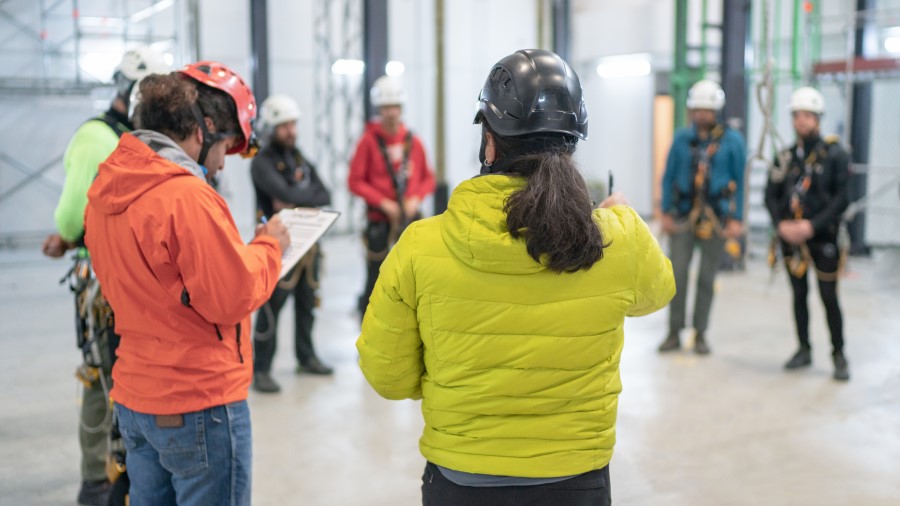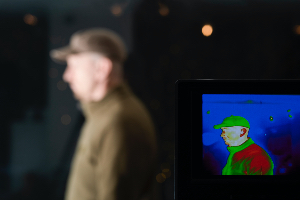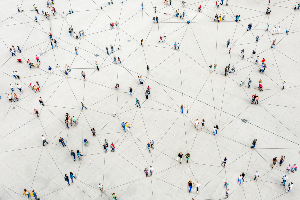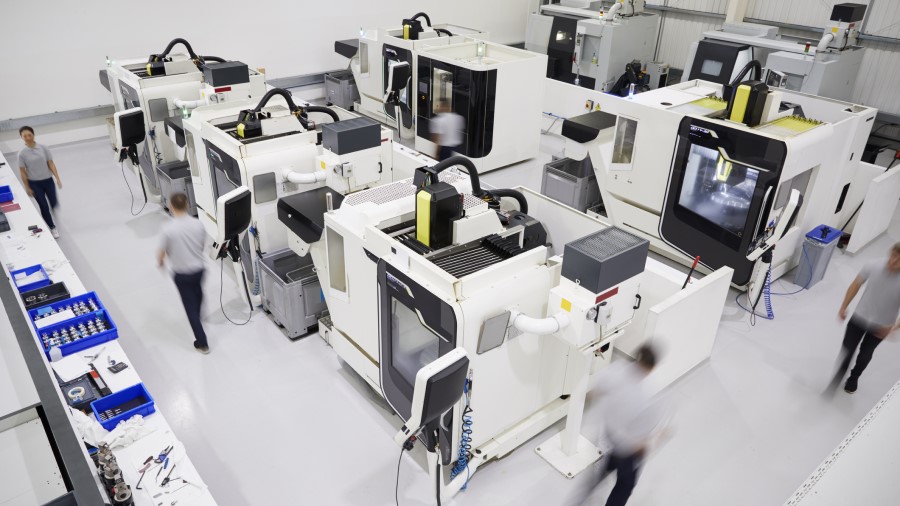By David McKnight, Director, Digital Manufacturing Solutions, Hitachi Vantara
COVID-19 has created significant disruption in the manufacturing industry. Whether your facilities are up and running because your operations are deemed essential or you are preparing to reopen facilities, it’s imperative to restart and scale operations as soon as it is possible and practicable to do so.
When reopening facilities, there are many decisions to make and much at stake. You must partner with suppliers, unions, and workers themselves to implement new practices that keep everyone as safe as possible. Onsite COVID-19 infections create physical and psychological setbacks for employees and can stall operations and damage your business. It’s best to exercise new working styles and an abundance of caution until effective treatments mitigate infection risk and business harm. You and your employees should expect that many of the work practices being implemented today will remain relevant into the foreseeable future.
Manufacturers are moving swiftly to adopt new workplace health and safety policies and practices. Among them are limiting or eliminating visitors to plants, instituting social distancing and handwashing policies, and frequently sanitizing production and shared spaces. These are important safety practices, but they don’t go far enough. Manufacturers must newly employ the five tenets covered here, some of which are enabled by technology.
Don’t underestimate how these changes affect everyone on your payroll. Whether your workers are performing back-office functions from home or working on the plant floor, their workday and the work environment have changed significantly. Acknowledging the “new normal” puts you one step ahead.

Be transparent. This is the time to be up-front about the threats that your people and your business are facing. Tell them what is being done to mitigate those threats. Communicate that these changes are necessary to protect worker health and reduce risk for contracting illness and ensure business continuity. It will be much easier to get everyone’s buy-in if they understand what is happening, why it’s happening, and how they’ll benefit.
External communication is equally critical. Proactive, public explanation of changes to working conditions bolsters the confidence of those working within manufacturing. When the public sees your company actively working to secure the safety of employees, it’s a positive reflection on the company brand and local perception of the company as an employer.

You need to implement a highly effective system to rapidly detect symptomatic individuals, set-up covid risk assessment procedures, and contain infection risk. Rapid containment is key to minimizing the threat of COVID-19, as well as ensuring that affected workers get the medical treatment that they need to recover and minimize long-term risks to their health and to their coworkers.
Fortunately, the technology already exists to accomplish these goals. For example, thermal imaging cameras can scan employees for evidence of elevated temperature as they arrive for work and leave for the day. More sophisticated thermal imaging solutions scan multiple points on individual workers’ faces to get accurate temperature readings. Real-time data triggers automated alerts when a worker’s temperature exceeds a preset level. Managers can then move swiftly to send workers to a secondary location for medical testing or home for self-isolation as required.
Some of these protective actions may be viewed as treading on a worker’s right to privacy. Make sure your employees know what to expect before they arrive at work. Address their concerns. Communicate the need for the technology, how it works, and the benefits of using it. Explain what happens if they scan positive, including the impact to their ability to work and their compensation. Emphasize that workers who aren’t feeling well should not come to work, regardless of cause.

How do manufacturers identify who has had contact with an infected individual and evaluate the risk of rapid spread through a facility? How do manufacturers ensure that workers are adhering to prevention strategies such as social distancing and cleanliness? These are critical questions that can be addressed by applying existing technologies.
• Contact tracing with sensor-tagged badges. Wearable badges track workers’ movements for contact tracing in the event of an infection. By cross-referencing the movements of infected employees with others, managers can pinpoint potentially exposed workers and mitigate additional exposure. Technology-enabled contact tracing removes the cost and delay of person-to-person interview processes, while increasing accuracy. And the day-over-day data on people flow and person-to-person contact provides valuable insight on areas where patterns of movement will increase contact risk.
• Automated handwashing compliance assurance. Vigorous soap-and-water handwashing reduces the risk of contraction. 3D LiDAR sensors installed at bathroom sinks or wash stations verify worker compliance — or lack thereof — with handwashing procedures. These cameras do not collect personally identifiable information, so they can be used where privacy is imperative. Companies use this information to inform internal communications campaigns, run contests, post leaderboards with results, and target education to groups with poor compliance.
• Social distancing monitoring. New technologies, including 3D LiDAR sensors and video analysis, are used to generate footfall analytics, detecting where and how workers move. In the short term, they detect when people are too close to each other for safety and send out alerts or dim overhead lights to remind workers of distancing requirements. For longer-term planning, if managers identify too much traffic in small or dense spaces, they can rationally choose to redesign spaces or create new walking paths to enable better traffic flow and social distancing.
Running a business in the “new normal” means preparing for a world in which change is sudden and unexpected. Now is the time to consider how new technology can improve existing operations’ policies and adjust them as needed for this new reality. Data insights, robotics, and analytics can help bring strategic decision-making and operational adjustments into real time.

• In plants, people movement and person-to-person contact data can be used in many ways. Consider the feasibility of redesigning plant layouts and walkways to improve social distancing and minimize contact points; reconsider how workers rotate among multiple work cells; add new shared spaces such as break rooms; and increase the adoption of automation and “cobots,” robots that work alongside workers. The new data can support auditability and enhanced reporting requirements on the horizon.
• Similar person data can be used to target education and boost compliance. Developing a good understanding of workforce health, process compliance, and physical movement positions companies to make further changes if outbreaks occur.
Operational processes that have been implemented include staggering shifts across a 24/7 work week, with gaps between shifts so that workers don’t interact; adopting touchless processes; adding UV lights to air filtration systems; providing masks or enhancing PPE; and training employees. These changes help protect workers.
In the longer term, manufacturers will need to create greater flexibility and responsiveness by further digitizing processes, developing greater situational awareness through cloud-based analytics and internet-of-things (IoT) initiatives, restoring elements of the supply chain, and empowering workers with new digital skills.
Across locations and supply chains, manufacturers must use analytics to build redundancy into workforces and supplier bases, identify weak or growing demand, and pivot rapidly to make new products (including masks or hand sanitizer) to preserve the business and restore revenues.
COVID-19 is forcing change at an unprecedented speed and scale as manufacturers plan for an unknown business, operational, and economic future. Now is the time to lead, to protect workers, safeguard jobs, and build an adaptable, smart manufacturing industry that can respond to any and every challenge in the dynamic global marketplace.
Hitachi is committed to answering the world’s social, environmental and economic needs by partnering with businesses like yours to innovate for the greater good. Now is the time to work together to overcome challenges while innovating for the safer workplace of the future.

Director, Digital Manufacturing Solutions, Hitachi Vantara
David McKnight joined Hitachi in 2016 with an eye to broaden his work in Industrial IoT and Digital Manufacturing. At Hitachi Vantara, he is driving manufacturing operations excellence solutions with clients across various industries. Prior to his tenure with Hitachi, David has focused on providing industrial automation and SAP manufacturing solutions throughout the world. David is passionate about enabling Manufacturers and their operators, supervisors and management to employ technology to maximize productivity, quality, safety and flexibility.